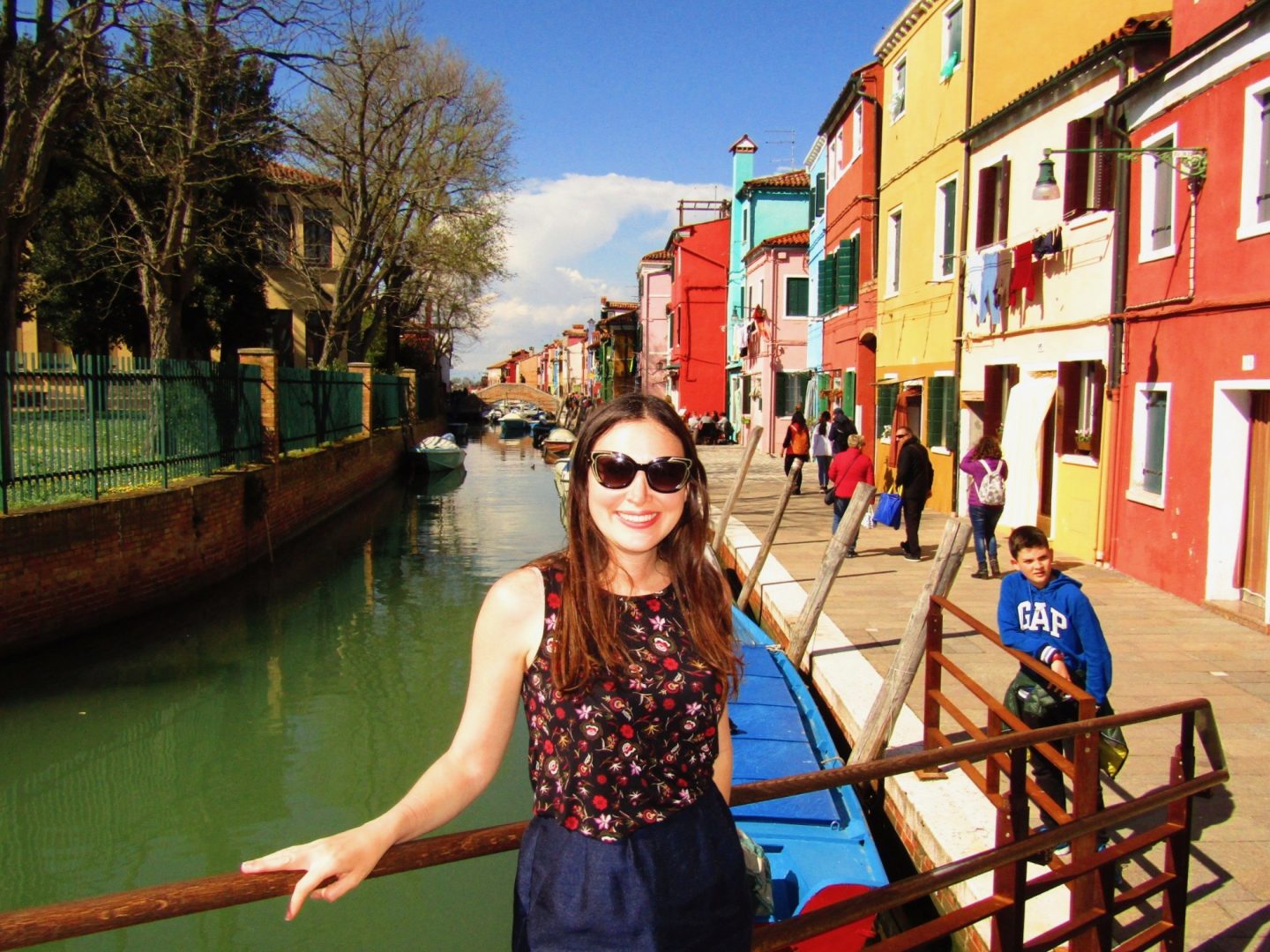Torcello is one of the three islands that most tourists visit when they go to Venice. It is possible to visit Murano, Burano and Torcello in one day, but the last two are far from the first. We visited Murano one afternoon and the next day we went to Burano and then to Torcello, which is less than five minutes away by vaporetto.

When you arrive on the island you will realize that it is smaller than the other two, however its historical importance is enormous since it was the original Venice. You will see fewer tourists than in other places, but it is impossible not to find them in Venice and you can see them in masses every time a vaporetto arrived.

History of Torcello
Contrary to what you see today, Torcello used to be one of the most inhabited islands in Venice. It was founded in 452 when those from Lombardy and the Hun invaded northern Italy. The city of Altino, on the mainland, was destroyed and the population that survived fled to this site, including the Bishop of Altino. It got to have a population of over 20,000 people in the tenth century. Currently, the island has about 75 inhabitants.

The Black Death ravaged the Republic of Venice several times: first in 1348, then between 1575-1577 and finally between 1629-1631, killing 50,000 people. The swampy land of the lagoon began to sink in the fourteenth century creating the perfect environment for the reproduction of mosquitoes. Malaria attacked the island, causing the death of many of its inhabitants. Those who survived fled to Venice. This moved the power to Venice, leaving Torcello in oblivion. The lagoon began to be known as the morta lagoon (dead lake) and commerce stopped.

In ancient times there were palaces, churches and monasteries. But its material was taken and used to build new buildings. There are almost no buildings in Torcello, just a couple of restaurants, houses, hotels and churches. Before the emigration, the island had sixteen churches, now there are two.

Most of the island is a nature reserve accessible by roads. At the end of the main road after the church you can see a small vineyard. When we went the grapes had not flowered yet and it looked dead and sad.

Cathedral of Torcello
The oldest building in the whole lagoon of Venice is the Santa María Dell’Assunta Cathedral located in Torcello. This building was founded in 639 and still retains a nineteenth century portico. The cathedral that you see today was remodeled in 1008. To enter the museum you have to pay around €5.00 and if you want the audio guide it costs €2 more.

The cathedral has mosaics from the Byzantine era dating from the twelfth and thirteenth century. Its most famous murals are the ‘Last Judgment’ and ‘Madonna and his child’ decorated with gold paper. They do not let you take pictures inside.

Climb the bell tower of the Cathedral of Torcello for the best views of the lagoon and its marshes. Under the altar there is a crypt with a passageway that shows the brick structure that dates back to the medieval times. As it floods, they built a wooden bridge so that it can always be visited.


Next to the cathedral is the church of Santa Fosca that has no entrance fee. This church was done in a Greek style and was built in the eleventh century to commemorate Santa Fosca, a martyr of Ravenna who was buried with her nurse and martyr, Santa Maura. If you want to visit both churches you should try to arrive early as they close between 4-5 p.m. depending if it’s winter or summer.



What to do?
On the other side of the Cathedral there is a museum (it does not open on Mondays) in one of the few remaining mansions. This house was part of the government in times of prosperity.


Today, it has medieval artifacts that were mostly found on the island. Archaeologists have found objects from the Palaeolithic period to the Roman period in Venice. In the patio you will find a chair made of stone that they say belonged to Attila, king of the Huns. Most likely it belonged to the Bishop of Torcello or some officer of the island.


We did not go to the Andrich Museum House but you can see the signs pointing to its location. This artist house shows more than 1,000 works of art. In addition, it has a farm and garden that overlooks the lagoon where flamingos arrive from March to September.
The bridge of the devil, ‘Ponte del Diavolo’ in Italian, is one of the most photographed sites on the island. This curious bridge has no handrails. The legend says that it was built by the devil in a night to win a bet.

Locanda Cipriani has a small historic hotel and a delicious restaurant. Ernest Hemingway stayed in this place and it was where he wrote part of his novel “Across the River and Into the Trees“. We had already eaten in Murano, so we did not have lunch in Torcello, but we took advantage of the beautiful spring day to relax in the Taverna Tipica Veneziana. The patio was full of tables with tourists who mostly were drinking beer. We prefered to eat dessert, as we were on a mission to try all the ice creams in Italy.

The last vaporetto to Burano leaves at 8:10 p.m. so it’s not a good idea to stay for dinner on the island unless you’re sleeping in it.










